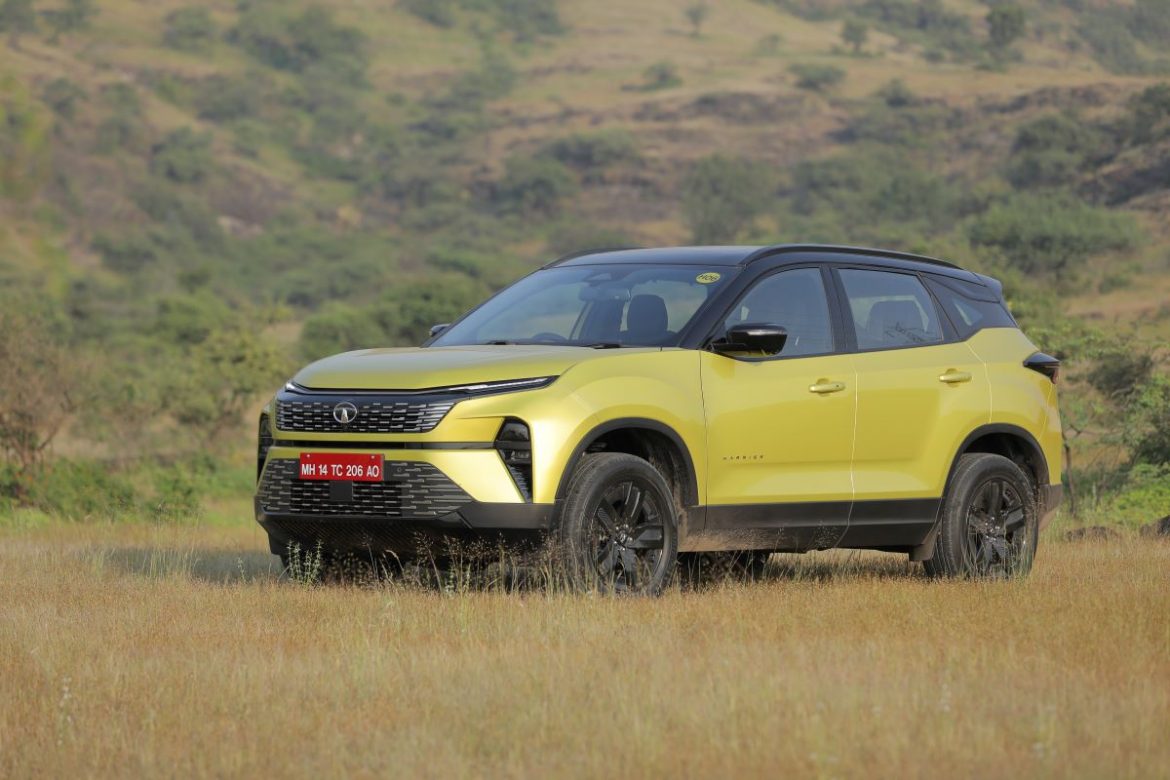Tata Motors has been constantly refreshing the Harrier since its launch in 2019. Still, it was lagging behind the competition in a few aspects – chiefly due to the dated infotainment interface, indirect steering feedback, and lack of powertrain options. While a petrol engine is still some time away, Tata Motors has substantially improved the in-cabin experience and the dynamic response of the Harrier. A noticeable design upgrade, the Harrier, especially in the Sunlit Yellow colour that enhances its already muscular design, is a sight that can’t be missed. The facelifted Harrier features newly designed LED daytime running lights connected to sequential turn indicators and a unique front grille with contrasting colours. The air dam and scuff plate have also been modified for a wider and chunkier appearance.
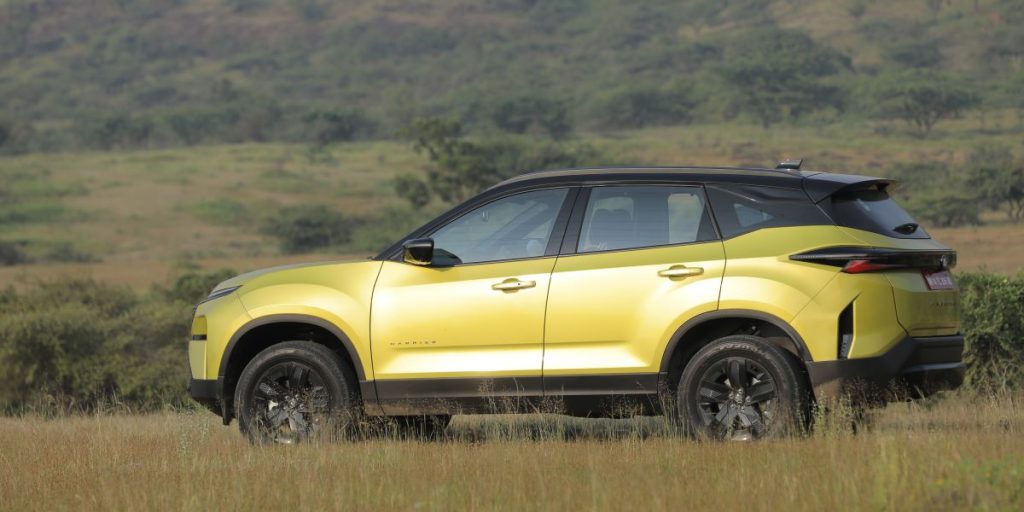
The larger 19-inch wheels, new ‘Harrier’ badges on the front doors, and the sleek rear-end with its chiselled tail lamps connected by a light bar lend the vehicle a strong presence. Additionally, the lamps feature a special light show that gets activated when the car is unlocked or locked, giving a fun and unique vibe to the vehicle. On the flip side, the rubber door seals don’t fit seamlessly, and even the paint started chipping on the test vehicle that we had.
The Harrier’s interior has also undergone significant changes. The dashboard features slimmer AC vents while the steering wheel has been refreshed with a gloss black boss featuring an illuminated Tata logo. The steering wheel feels nice to hold but the illuminated logo is a polarising feature, in my view. The new persona-based interior colour themes, though, surely add distinction to the vehicle’s interior. The Sunlit Yellow test vehicle that we reviewed had a yellow panel on the dash, along with yellow contrast stitching and grab handles, making it stand out. However, the other exterior colours get more subdued interior tones.
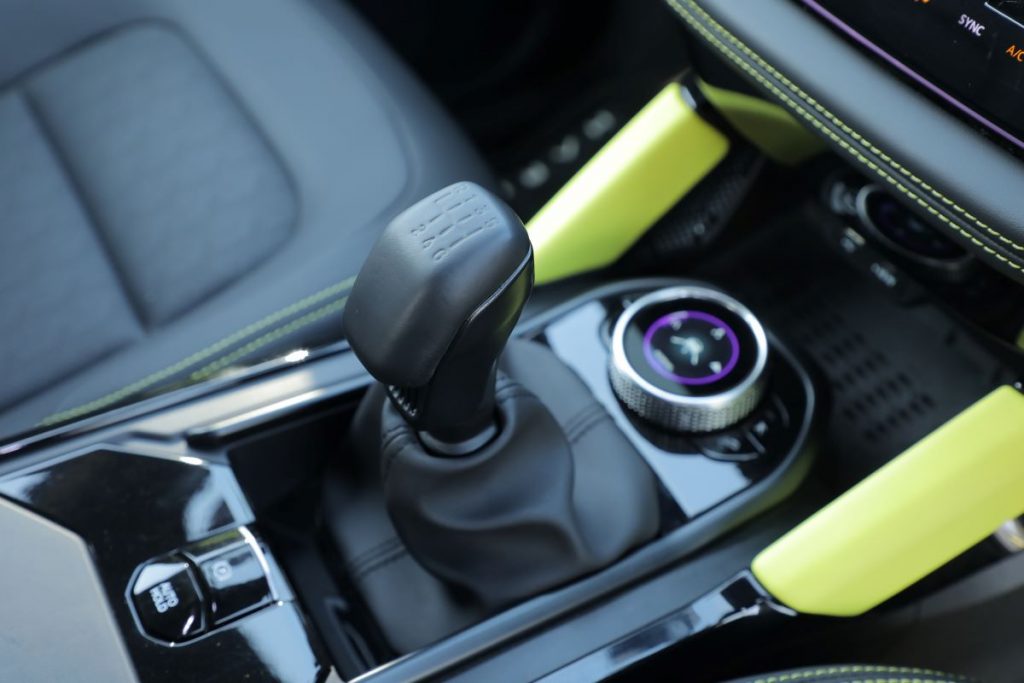
Taking centre stage now is a touch panel which controls the HVAC and things like the electric tailgate, fog lights and the 360-degree camera system. Although it makes the dashboard look cleaner, digging through menus and sub-menus to access the controls is far more difficult compared to physical buttons. The most significant tech update on the new Harrier is the new 12.3-inch touchscreen. It is slick, responsive, and packs in a whole lot of features, such as wireless Android Auto and Apple CarPlay, a 360-degree camera. The screen displays the onboard air purifier and JBL sound modes. There are 13 sound modes and they are nicely tuned to deliver a very satisfying aural experience.
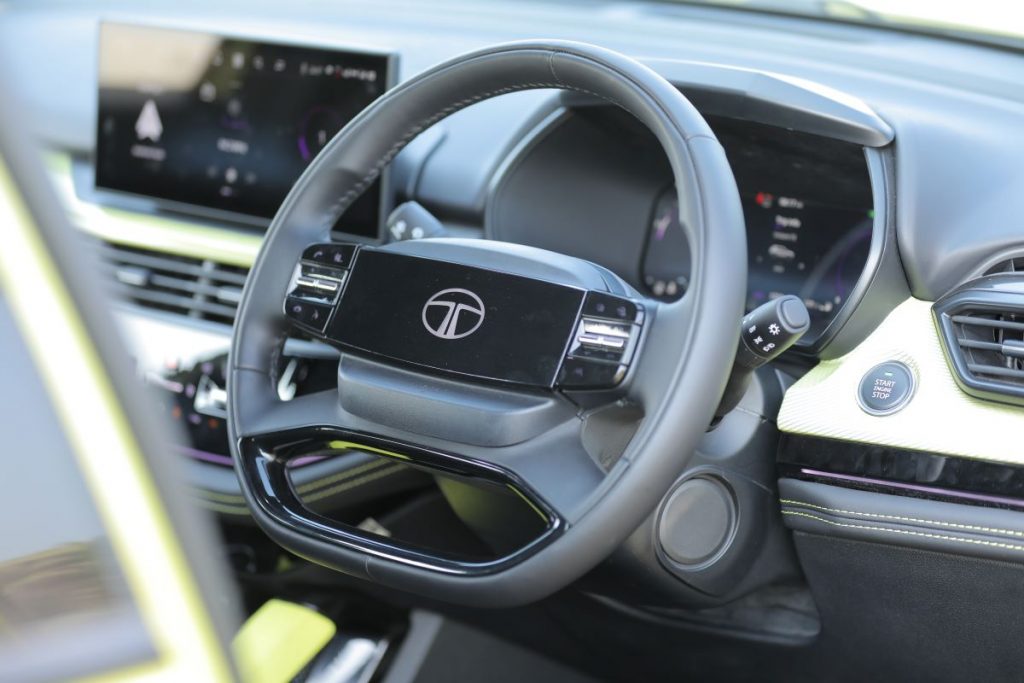
There’s also a 10.25-inch digital instrument cluster that displays a variety of information, including maps, with customizable layouts. There is a wireless charger, a Type-A port at the front, and a 45W Type-C USB port that provides quick charging of your devices via cable. The top variant gets a six-way power-adjustable driver’s seat, a four-way power-adjustable front passenger seat, ventilated seats, and customizable mood lighting. The car comes with a range of safety features, including seven airbags, ABS, ESP, a tyre pressure monitoring system, and advanced driver assistance systems (ADAS). The ADAS suite comprises of lane-keep assist, lane departure warning, blind-spot warning, rear traffic cross alert, and adaptive cruise control with stop-and-go.
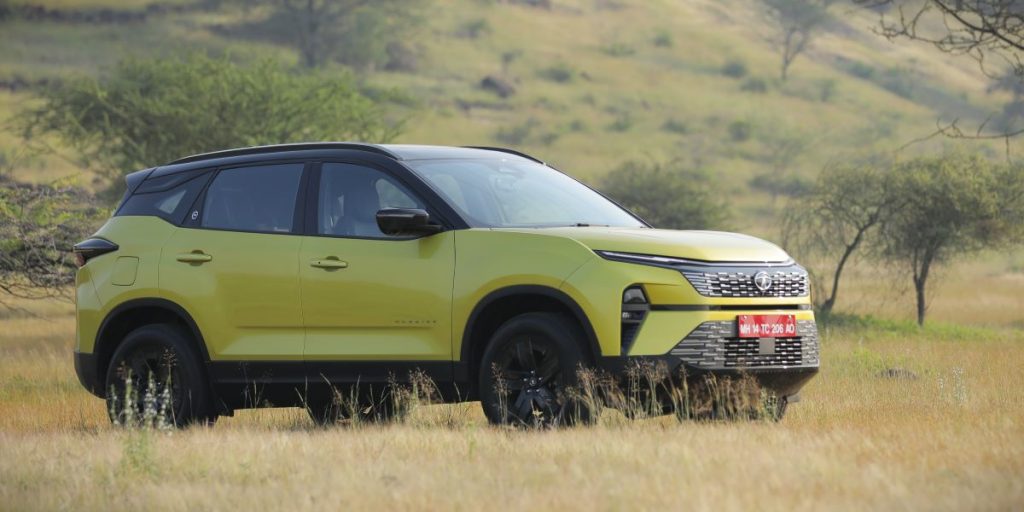
The facelifted Harrier continues to be a diesel-only SUV. It is equipped with the same 2.0-litre diesel engine as before and it produces 168bhp and 350Nm of peak torque with the BS6.2 upgrades. When moving from stationary, it feels no different, but as you gain pace and get into a rhythm, the inclusion of rear disc brakes, larger wheels, suspension tweaks, and switching from hydraulic to electric power steering underline the improvement in its overall dynamic capabilities. The improved steering is the most significant change, as it removes the inconsistency and ‘sticky’ feel of the old Harrier. Additionally, the steering effort required at parking speeds and during U-turns is far less than before. With disc brakes all around, the stopping prowess is good but the pedal feel is a bit mushy. The wider rubber affords the Harrier a better cornering grip, and it masks its heft and size really well.
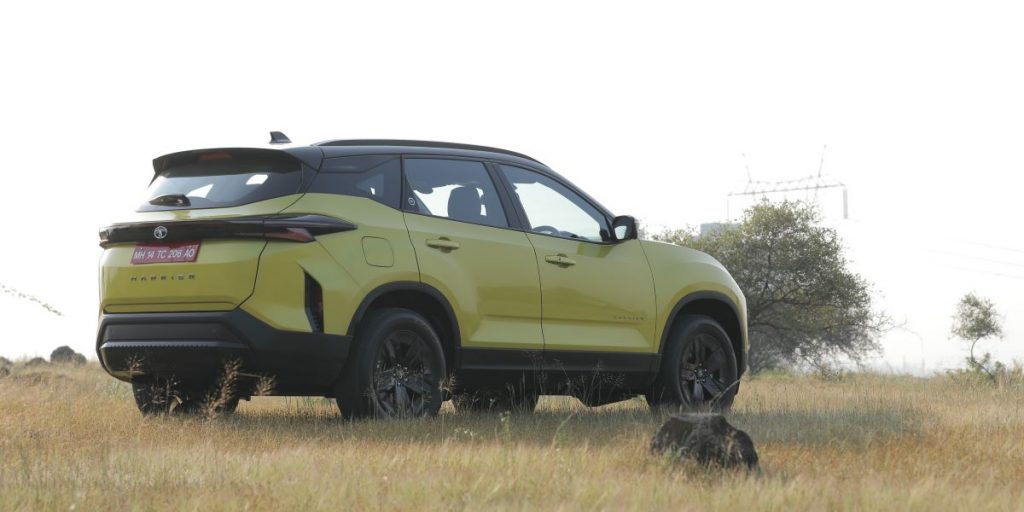
The new Tata Harrier is a significant and impressive upgrade from its predecessor in many ways. Some shortcomings still need to be addressed, there is room for improvement in overall quality and attention-to-detail, and its appeal may also be limited by the fact that it’s only available in diesel. However, the diesel motor is quite potent and the new facelift model boasts a sharper design and several new features. If you’re specifically in the market for a diesel SUV, the new Tata Harrier makes for a compelling option.

